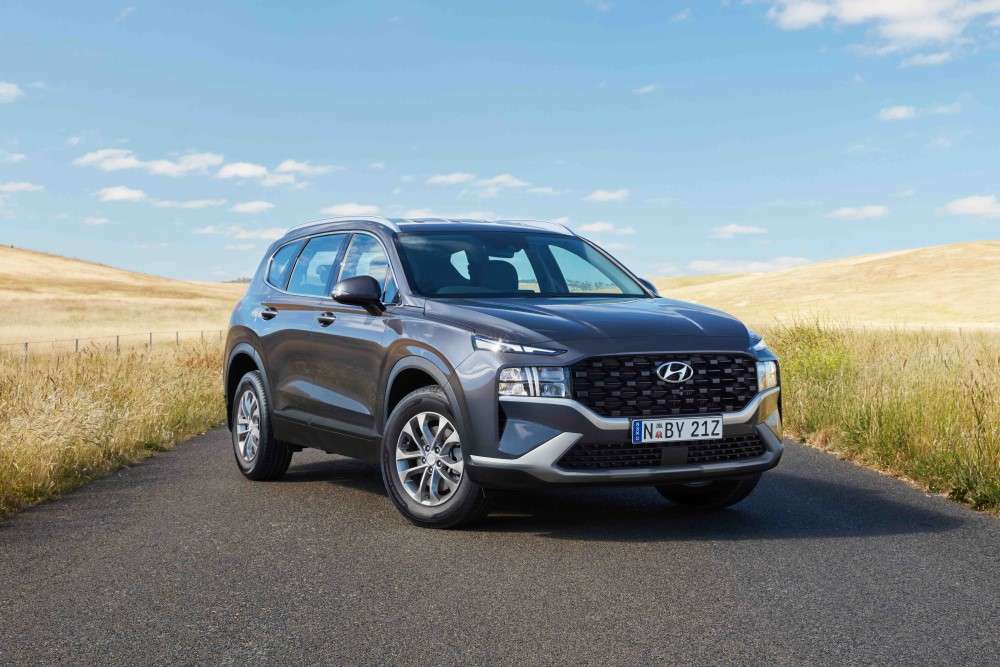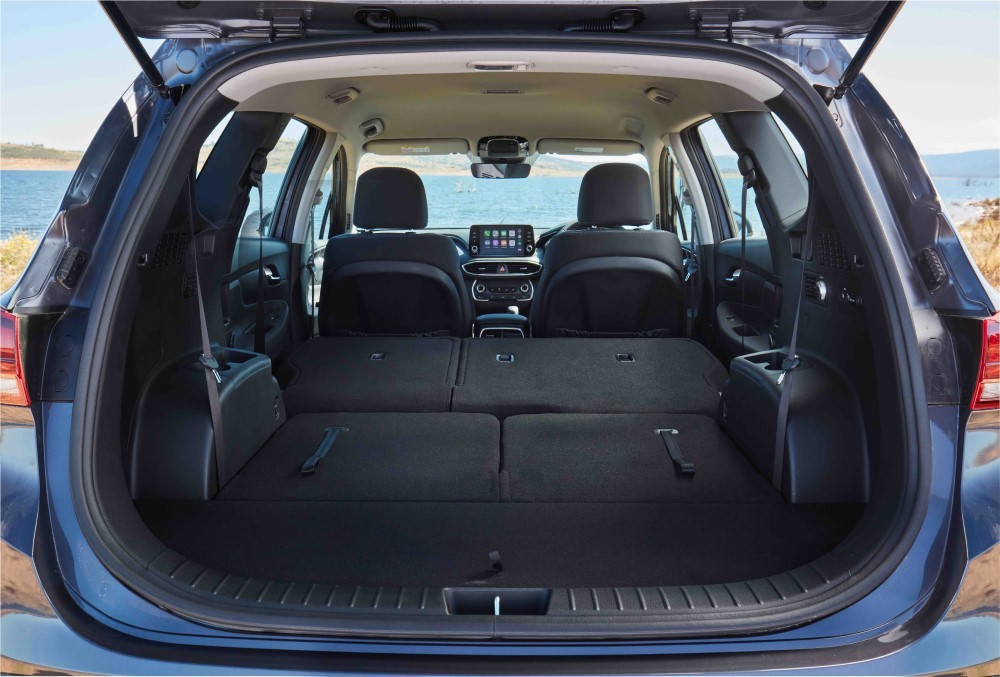
Seven Seat Space, Small Car Economy
We're all searching for a spacious vehicle, preferably an SUV, with room for the family, long legs for country motoring holidays and the thirst of a micro-car.
Normally, this ‘holy grail’ of motoring would be nothing but a myth. Now, thanks to the ongoing technological advances with electric motors, it’s a reality. But it’s not an electric vehicle, at least not wholly.
Hyundai is following world trends by introducing a hybrid model of one of its biggest and most popular SUVs. The Santa Fe HEV (hybrid electric vehicle) is an addition to the ongoing petrol versions (priced from $46,050) and diesel (from $49,550) and has two variants, the Elite and the Highlander. Note that from 2024, the Santa Fe may not be available with a diesel engine so if you want one, get it now.
A quick word about hybrids: There are two power plants, a petrol or diesel engine and one or two electric motors. The engines generally power up a generator for the onboard batteries and these batteries power the electric motor(s). Onboard monitors decide what power plant is most appropriate for the driving conditions - usually the electric motor will power the vehicle when reversing or slow forward speeds. For power, the engine is used and when lots of power is needed (judged by the pressure on the accelerator pedal) then both can work together. The batteries aren’t big, so the distance on pure electric is quite short — usually less than 1km. But they can save a lot of petrol or diesel by stopping the engine when the car is coasting, braking or at the traffic lights. How big are the savings? Read on.
How much?
The Hyundai Santa Fe remains a solid SUV that is high on the shopping list for many buyers, not necessarily just families. The wagon is attractively styled, has lots of features, a wide model range, and can seat up to seven people, not just small people.
The Santa Fe range starts at $46,050 (plus on-road costs) for the V6 petrol automatic with front-wheel drive. All four grades of the petrol Santa Fe are front-wheel drive, so if you want all-wheel drive (AWD) you have to go to the diesel or hybrid versions.
Diesel starts at $49,550 and goes up to $66,550 for the top-shelf Highlander and, because of the fuel type, are likely suit people who do a lot of country travel.
The hybrids (HEV) are the Elite ($63,000) and the one tested here, the Highlander ($69,550). Both have the same drive train, and only the feature list separates them by price.
How Big?
The Santa Fe is classed as a Large SUV and competes with vehicles, including the Kia Sorento, Mazda CX-8 and CX-9, and Toyota Kluger.
It is a sizeable wagon at 4785mm long, 1900mm wide and 1710mm high. It sits on a 2765mm wheelbase. Luggage space is from 571 litres.
So it’s smaller than the biggest Hyundai, the Palisade, by 210mm in length and sits on a wheelbase that is 135mm shorter.
The Santa Fe has a biggish 11.4m turning circle, although that never presented a problem on test.
Hyundai quote the boot space at 571 litres rising to 782 litres (third row folded) which is roomy. It has enough room to store a full-size (alloy) spare wheel which is great for people looking at a car for family motoring holidays. Be aware that some rivals don’t have a full-size spare wheel and a couple don't have a spare wheel at all.
How fast?
Just because it has a hybrid badge on the tailgate, it doesn’t mean this is a wheezy machine to drive. Sure, it’s made with economy in mind by Hyundai figures (correctly) that sometimes haste is a necessity of life.
The HEV has a 1.6-litre turbocharged four-cylinder petrol engine that’s used by a few others from the Hyundai and Kia stables, including the i30, Tucson and i20N.
It delivers 132kW/265Nm which is peppy on its own, but when linked to the 44.2kW electric motor lifts total output to a heady 169kW/350Nm. Note that the way the two power units deliver their outputs happens at different revs and it’s not a case of adding one to the other.
All this goes to a six-speed torque converter automatic (unique to the HEV as other Santa Fe versions use either an eight-speed automatic or eight-speed dual-clutch transmission) and then to the front wheels, with all-wheel drive coming in automatically or when the driver selects an off-road mode.
How thirsty?
Hyundai claims that the Santa Fe HEV gets an average of 6.0 litres per 100km, giving the SUV a theoretical range of 1117km. Clearly, you can go for a long time on a tankful.
On test, the wagon returned 6.5 L/100km (so a possible range of 1030km) which is small-car territory. Better, the engine runs on the cheapest 91RON fuel.
This is the clear advantage of a hybrid and so much so that it outshines the diesel Santa Fe version (claimed at 6.1 L/100km). No wonder Hyundai is likely to can the diesel when the next-generation Santa Fe arrives next year.
What’s inside?
The Santa Fe HEV Highlander here has pretty much every feature available on Hyundai’s parts and options shelves, hence the price tag.
There is nothing wanting here. Niceties include the 12.3-inch centre display (and 4.2-inch for the driver’s info), ‘passenger talk’ that allows conversation from the rear to the front using the audio speakers; Nappa leather upholstery and trim with suede highlights; dual-pane sunroof; head-up display; air-vented (and heated) front seats; heated steering wheel; puddle lights (shining down from beneath the mirrors); and 19-inch alloy wheels with a full-size spare.
How much room?
The Highlander version is a seven-seater but you can option it with six seats. Here, the centre row has two individual chairs, so it becomes a very cozy cabin.
The boot can store from 571 litres with all seats in place. The rear seats can be folded remotely from the back of the vehicle. There’s also a rear luggage blind for privacy.

How safe?
Standard features include a comprehensive safety equipment list with highlights being parking collision avoidance, a surround-view 360-degree camera, rear-seat passenger alert (so you don’t leave someone behind), parking distance warning with guidance markers front and back, traffic sign recognition, rear and front cross-traffic alert and full forward vision avoidance.
This is in addition to the autonomous emergency braking (AEB) system, seven airbags, lane keeping and lane assistance sensors, and a five-star (2018) safety rating.
ANCAP gave it an 94 percent score for adult occupants and 86 percent for child occupants. Pedestrian safety was 67 percent, and its active safety systems are 78 percent. Service costs?
Service costs?
Hyundai has a five-year, unlimited-distance warranty. There is also a 24/7 roadside assistance program included with the car that lasts for the first 12 months. But if you continue to get the vehicle serviced at an authorised Hyundai dealership, the roadside program is updated for a further 12 months for each visit.
You also get updates to the (standard) satellite navigation maps.
Service intervals are 12 months or 10,000km. The average annual service costs are $459 and for five years, the total is $2295.
Rivals?
Kia Sorento HEV: $69,750*
Mazda CX-8 Asaki (diesel): $69,410*
Mazda CX-9 Asaki (petrol): $71,900*
Toyota Kluger Hybrid Grande: $80,230*
* plus on-road costs
Pricing?
The Hyundai Santa Fe HEV opens at $63,000 plus on-road costs for the Elite and, for the one tested here, the Highlander, is $69,550 (plus on-road costs).
Once you've found the right car, the next step is sorting out car finance that actually works for your budget. Credit One is Australia's best-reviewed finance broker, with 3,000+ five-star Google reviews from customers who've been through the process. Check out Credit One reviews to see what people say, or head straight to the loan repayment calculator to see what the numbers look like.
